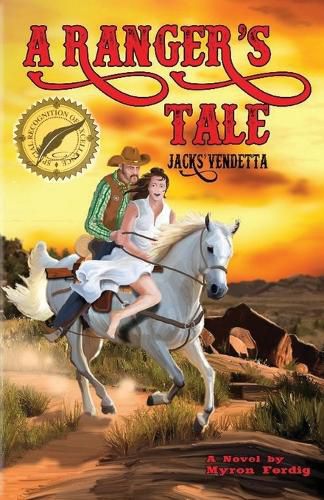Readings Newsletter
Become a Readings Member to make your shopping experience even easier.
Sign in or sign up for free!
You’re not far away from qualifying for FREE standard shipping within Australia
You’ve qualified for FREE standard shipping within Australia
The cart is loading…






This title is printed to order. This book may have been self-published. If so, we cannot guarantee the quality of the content. In the main most books will have gone through the editing process however some may not. We therefore suggest that you be aware of this before ordering this book. If in doubt check either the author or publisher’s details as we are unable to accept any returns unless they are faulty. Please contact us if you have any questions.
Before 1820 most of what is now known as Texas was part of Spain. A fellow by the name of Moses Austin had secured approval from Spain to settle a massive land area in what was then called Tejas. (Teh?hass) His goal was to bring in three hundred immigrant families [history calls them "the old 300"] to settle area around the Brazos, San Bernard and Colorado Rivers. But Moses Austin died in 1821; Mexico won independence from Spain, and Steven Austin inherited the land grant - with certain conditions -- newcomers must learn the Mexican language, become citizens and accept the Catholic faith -- approval was received from the new Mexican Regime; he proceeded to bring families into Tejas, to fulfill his father's dream. These first legitimate immigrants were called Texians. The population grew exponentially, and in just three years' time it reached almost two thousand.The Mexican government told Austin that protection against the influx of the criminal element flowing in from Kansas, Oklahoma and elsewhere, and the native marauders {especially Comanche and Kiowa} was entirely on his shoulders; Mexico wouldn't intercede.In 1823, Austin hired ten men to act as a "Ranging" Police Force to protect his Texian residents from Indians and criminals, and to keep the peace in his "experimental colonies" -- thus, the legend of the Texas Rangers began.By the end of 1835, these Rangers had grown to become an official "Republic of Texas" force of over sixty men, made up of three divisions, and took part in the fight for independence against Mexico. and byMarch,1836, Tejas declared itself an independent republic. There were fewer than eight thousand Mexicans now residing in this rough, unforgiving land, with four times as many immigrants -- mostly U.S. citizens.By this time, the Rangers were a hardened fighting force. They had earned a reputation that approached legendary among the citizenry, the Mexicans and the Indians. They received nationwide fame in the U.S. press, as news of their exploits, whether true or exaggerated, became widespread, effectively establishing the Rangers as part of American folklore.
This is one such tale --
It centers around a group of Rangers in a small, fictitious Texas town who encounter a gang led by one Maywell Jacks, a hateful creature, intent upon ridding the world of anyone wearing a badge
$9.00 standard shipping within Australia
FREE standard shipping within Australia for orders over $100.00
Express & International shipping calculated at checkout
This title is printed to order. This book may have been self-published. If so, we cannot guarantee the quality of the content. In the main most books will have gone through the editing process however some may not. We therefore suggest that you be aware of this before ordering this book. If in doubt check either the author or publisher’s details as we are unable to accept any returns unless they are faulty. Please contact us if you have any questions.
Before 1820 most of what is now known as Texas was part of Spain. A fellow by the name of Moses Austin had secured approval from Spain to settle a massive land area in what was then called Tejas. (Teh?hass) His goal was to bring in three hundred immigrant families [history calls them "the old 300"] to settle area around the Brazos, San Bernard and Colorado Rivers. But Moses Austin died in 1821; Mexico won independence from Spain, and Steven Austin inherited the land grant - with certain conditions -- newcomers must learn the Mexican language, become citizens and accept the Catholic faith -- approval was received from the new Mexican Regime; he proceeded to bring families into Tejas, to fulfill his father's dream. These first legitimate immigrants were called Texians. The population grew exponentially, and in just three years' time it reached almost two thousand.The Mexican government told Austin that protection against the influx of the criminal element flowing in from Kansas, Oklahoma and elsewhere, and the native marauders {especially Comanche and Kiowa} was entirely on his shoulders; Mexico wouldn't intercede.In 1823, Austin hired ten men to act as a "Ranging" Police Force to protect his Texian residents from Indians and criminals, and to keep the peace in his "experimental colonies" -- thus, the legend of the Texas Rangers began.By the end of 1835, these Rangers had grown to become an official "Republic of Texas" force of over sixty men, made up of three divisions, and took part in the fight for independence against Mexico. and byMarch,1836, Tejas declared itself an independent republic. There were fewer than eight thousand Mexicans now residing in this rough, unforgiving land, with four times as many immigrants -- mostly U.S. citizens.By this time, the Rangers were a hardened fighting force. They had earned a reputation that approached legendary among the citizenry, the Mexicans and the Indians. They received nationwide fame in the U.S. press, as news of their exploits, whether true or exaggerated, became widespread, effectively establishing the Rangers as part of American folklore.
This is one such tale --
It centers around a group of Rangers in a small, fictitious Texas town who encounter a gang led by one Maywell Jacks, a hateful creature, intent upon ridding the world of anyone wearing a badge